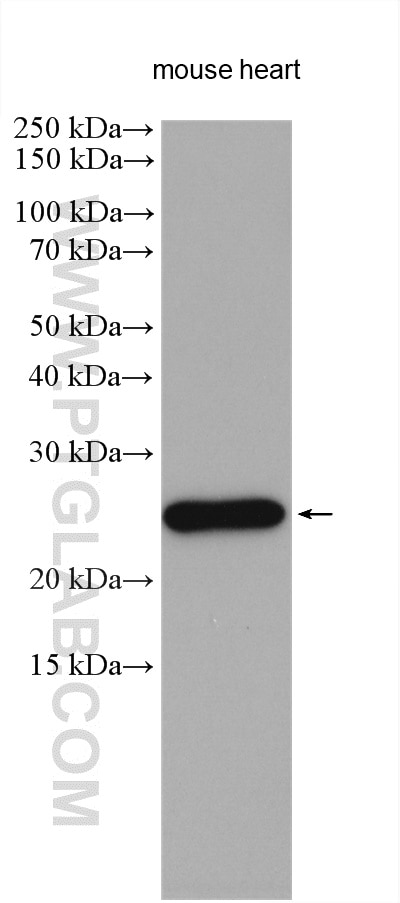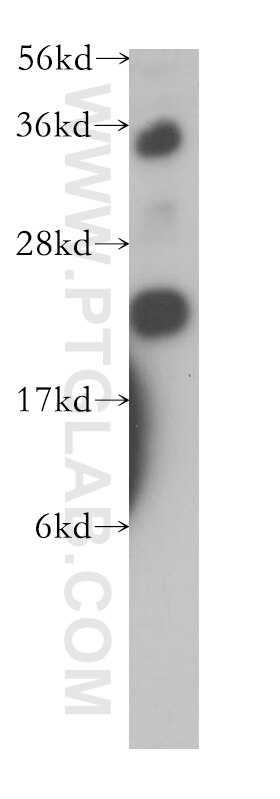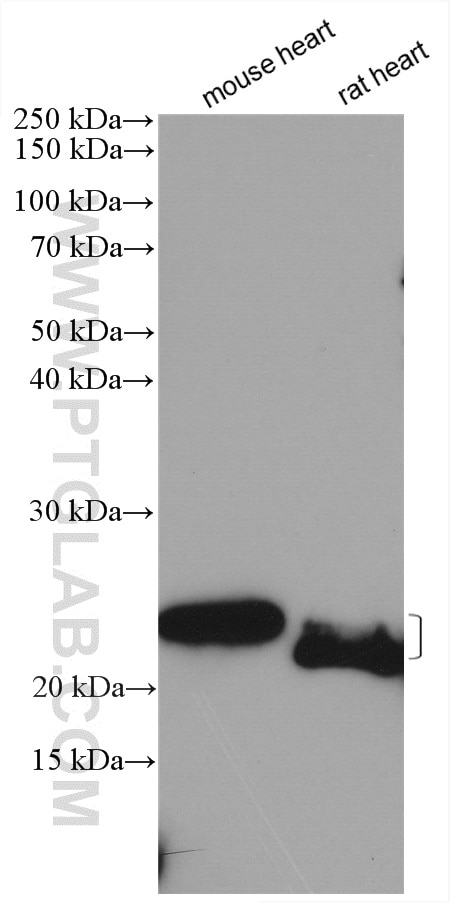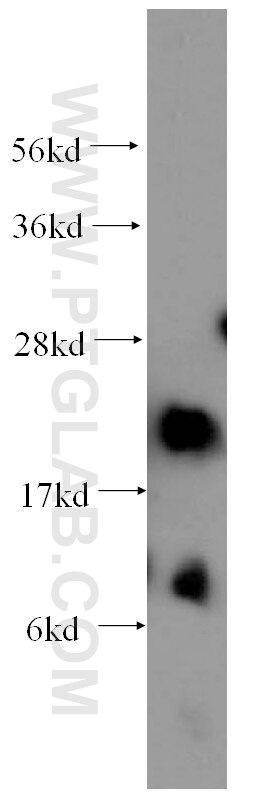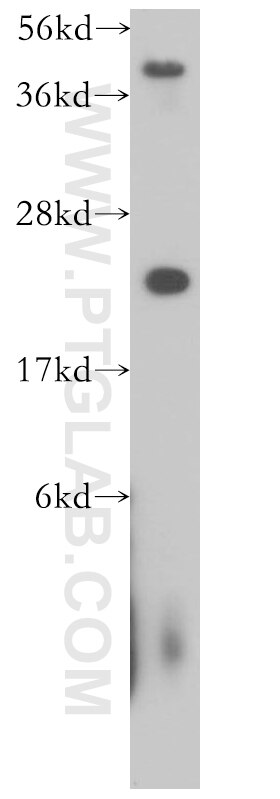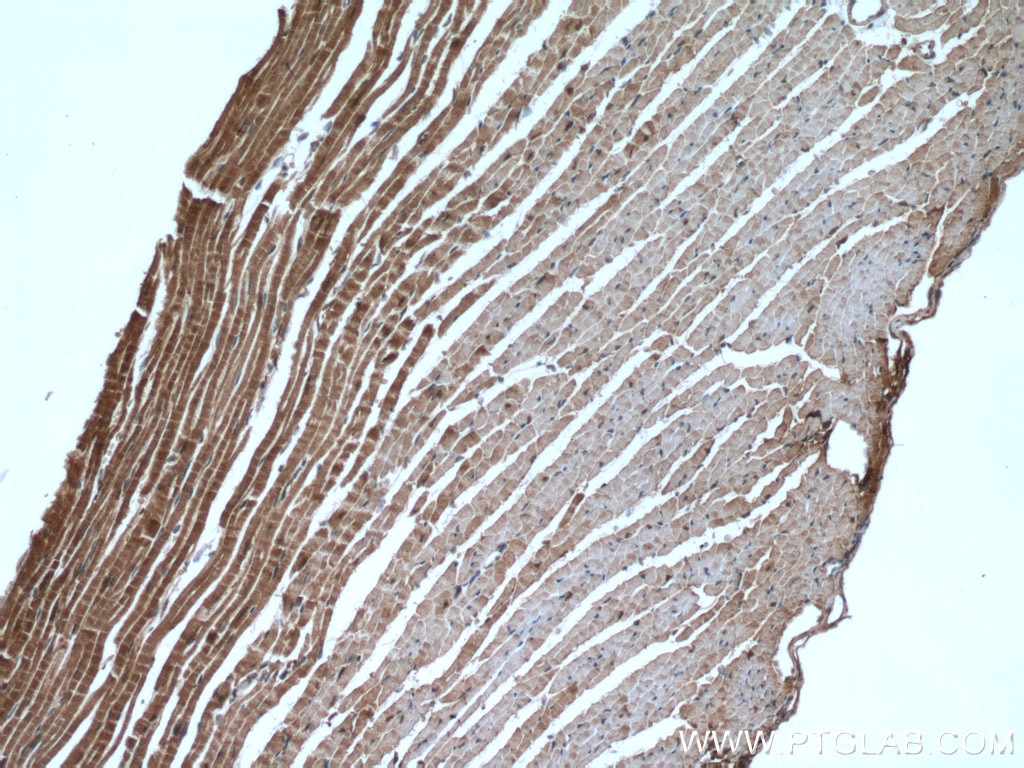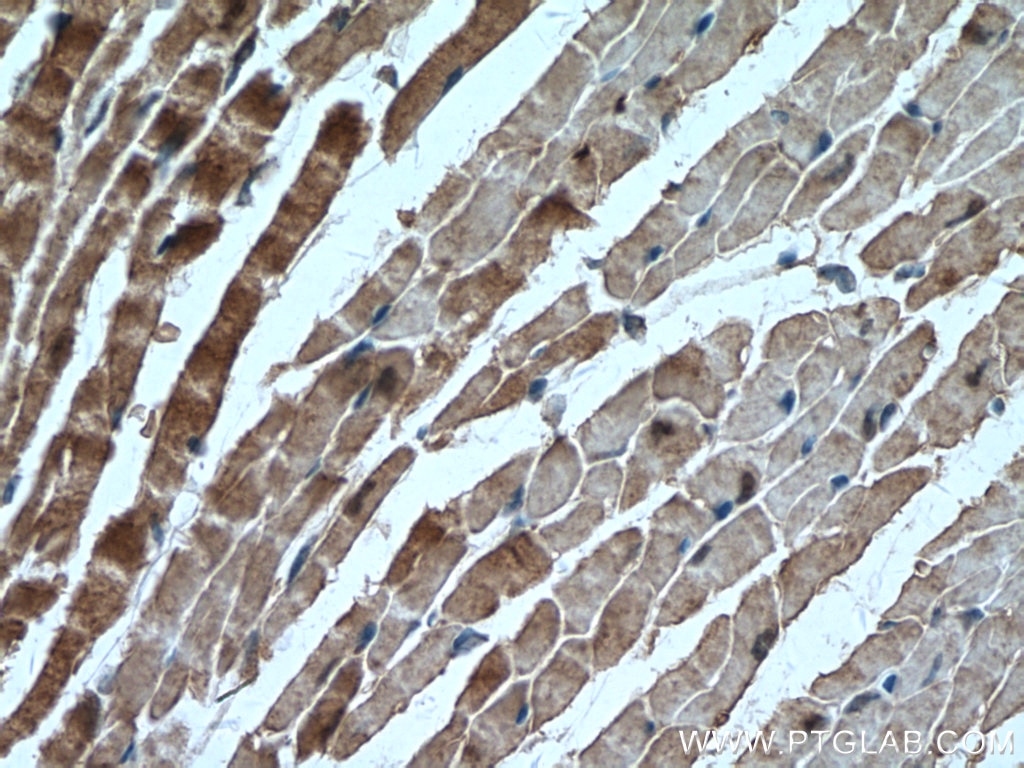Anticorps Polyclonal de lapin anti-AK1
AK1 Polyclonal Antibody for WB, IHC, ELISA
Hôte / Isotype
Lapin / IgG
Réactivité testée
Humain, rat, souris
Applications
WB, IHC, ELISA
Conjugaison
Non conjugué
N° de cat : 14978-1-AP
Synonymes
Galerie de données de validation
Applications testées
| Résultats positifs en WB | tissu cardiaque de souris, tissu cardiaque de rat, tissu cardiaque humain, tissu de muscle squelettique de souris |
| Résultats positifs en IHC | tissu cardiaque de souris, il est suggéré de démasquer l'antigène avec un tampon de TE buffer pH 9.0; (*) À défaut, 'le démasquage de l'antigène peut être 'effectué avec un tampon citrate pH 6,0. |
Dilution recommandée
| Application | Dilution |
|---|---|
| Western Blot (WB) | WB : 1:500-1:3000 |
| Immunohistochimie (IHC) | IHC : 1:50-1:500 |
| It is recommended that this reagent should be titrated in each testing system to obtain optimal results. | |
| Sample-dependent, check data in validation data gallery | |
Applications publiées
| WB | See 5 publications below |
Informations sur le produit
14978-1-AP cible AK1 dans les applications de WB, IHC, ELISA et montre une réactivité avec des échantillons Humain, rat, souris
| Réactivité | Humain, rat, souris |
| Réactivité citée | rat, Humain, souris |
| Hôte / Isotype | Lapin / IgG |
| Clonalité | Polyclonal |
| Type | Anticorps |
| Immunogène | AK1 Protéine recombinante Ag6890 |
| Nom complet | adenylate kinase 1 |
| Masse moléculaire calculée | 22 kDa |
| Poids moléculaire observé | 22 kDa |
| Numéro d’acquisition GenBank | BC001116 |
| Symbole du gène | AK1 |
| Identification du gène (NCBI) | 203 |
| Conjugaison | Non conjugué |
| Forme | Liquide |
| Méthode de purification | Purification par affinité contre l'antigène |
| Tampon de stockage | PBS with 0.02% sodium azide and 50% glycerol |
| Conditions de stockage | Stocker à -20°C. Stable pendant un an après l'expédition. L'aliquotage n'est pas nécessaire pour le stockage à -20oC Les 20ul contiennent 0,1% de BSA. |
Informations générales
AK1(Adenylate kinase isoenzyme 1), also known as ATP-AMP transphosphorylase 1. It is located in cytoplasm. This protein is highly expressed in skeletal muscle, brain and erythrocytes. Certain mutations in this gene resulting in a functionally inadequate enzyme are associated with a rare genetic disorder causing nonspherocytic hemolytic anemia. Catalyzes the reversible transfer of the terminal phosphate group between ATP and AMP 1. Exhibits nucleoside diphosphate kinase activity, catalyzing the production of ATP, CTP, GTP, UTP, dATP, dCTP, dGTP and dTTP from the corresponding diphosphate substrates with either ATP or GTP as phosphate donor 2. Also catalyzes at a very low rate the synthesis of thiamine triphosphate (ThTP) from thiamine diphosphate (ThDP) and ADP. The molecular weight of AK1 is 22 kDa.
Protocole
| Product Specific Protocols | |
|---|---|
| WB protocol for AK1 antibody 14978-1-AP | Download protocol |
| IHC protocol for AK1 antibody 14978-1-AP | Download protocol |
| Standard Protocols | |
|---|---|
| Click here to view our Standard Protocols |
Publications
| Species | Application | Title |
|---|---|---|
J Proteome Res Data-Independent Acquisition Proteomics and N-Terminomics Methods Reveal Alterations in Mitochondrial Function and Metabolism in Ischemic-Reperfused Hearts | ||
Eur J Pharmacol Adenosine kinase (ADK) inhibition with ABT-702 induces ADK protein degradation and a distinct form of sustained cardioprotection. | ||
Cell Res Hierarchical activation of compartmentalized pools of AMPK depends on severity of nutrient or energy stress. | ||
EMBO J Aberrant DNA N6 -methyladenine incorporation via adenylate kinase 1 is suppressed by ADAL deaminase-dependent 2'-deoxynucleotide pool sanitation |
